

Color can not only enhance the overall look and feel of the space, it can also play an important role in the kitchen environment by affecting our mood, appetite, and even our perception of the space, and helping in the functionality.
Here are some of the ways color impacts a kitchen environment:
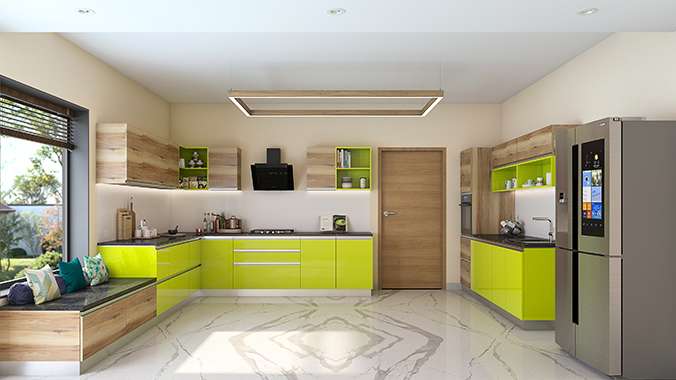
Color and aesthetics are closely related. The modular kitchen look and feel should complement the overall style of the kitchen. We will cover the specific aesthetic purpose of color section wise below. For broader understanding:
- lighter colors like white or beige can create a minimalist and modern look,
- while darker colors like navy or black can create a more dramatic and luxurious feel. It can also be used to create a focal point or a contrast.
- Creating a focal point: Bold, bright colors can be used to create a focal point in the kitchen, drawing the eye and making a statement. For example, a brightly colored back splash or kitchen island can add visual interest to an otherwise neutral color scheme.
- Creating contrast: Color can also be used to create contrast in the kitchen, adding depth and dimension to the space. For example, pairing light-colored cabinetry with a darker counter top can create a visually appealing contrast.
Reflectivity:
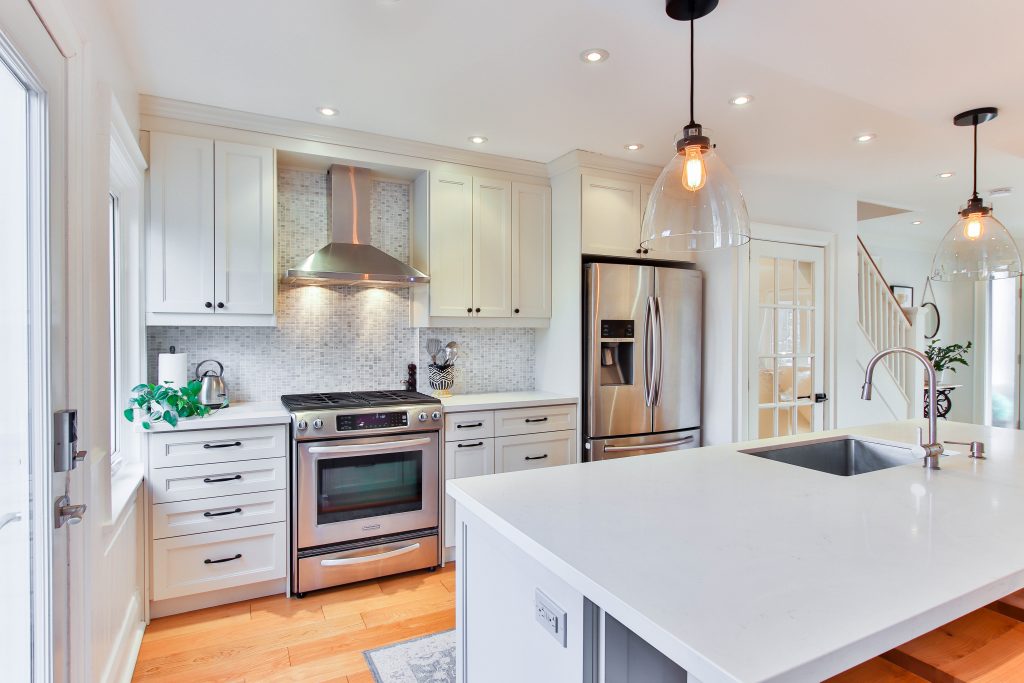
The color of the cabinetry and counter tops can also impact the amount of light in the kitchen. The choice of color and finish should be based on the desired atmosphere and functionality of the space.
- Lighter colors reflect more light: Lighter colors, such as white, cream, or pale pastels, reflect more light and can help to brighten up a dark or small kitchen. This can make the space feel more open, airy, and welcoming.
- Darker colors absorb more light: Darker colors, such as black, navy blue, or dark grey, absorb more light and can create a cozier and more intimate atmosphere. In a large kitchen with high ceilings, dark colors can help to bring the space down to a more human scale.
- Glossy finishes reflect more light: Glossy or high-gloss finishes can also help to reflect light, making the kitchen appear brighter and more spacious. This effect can be particularly helpful in a small kitchen where space is limited.
- Matte finishes absorb more light: Matte or low-gloss finishes absorb more light and can create a more subdued and sophisticated atmosphere. This can be particularly effective in a modern or minimalist kitchen design.
Functionality:
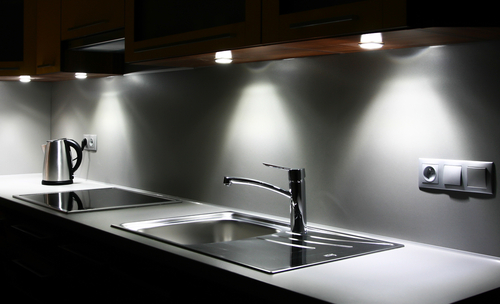
Color can also serve a functional purpose in the kitchen, such as highlighting specific areas like the stove or sink. The choice of color should be based on both aesthetic preferences and functional needs to ensure the kitchen is both stylish and practical.
For example, a brightly colored back splash or accent wall can draw attention to these areas and make them easier to find and use.
- Camouflaging stains and dirt: The color of the cabinetry and counter tops can affect how easily dirt and stains show up. For example, light-colored surfaces may show stains and dirt more easily than darker surfaces.
- Creating contrast for visibility: The color of the counter tops, cabinetry, and back splash can be used to create contrast, making it easier to see and use certain areas of the kitchen. For example, a darker back splash can make the stove area more visible and easier to use.
- Improving safety: Color can also be used to improve safety in the kitchen. For example, brightly colored electrical outlets and switches can be more visible, making it easier to avoid accidents.
- Enhancing efficiency: Color can also be used to enhance the efficiency of the kitchen by creating a logical flow of work. For example, using different colors to designate different work zones, such as food preparation, cooking, and cleaning, can help to streamline the cooking process.
Mood and Emotions:
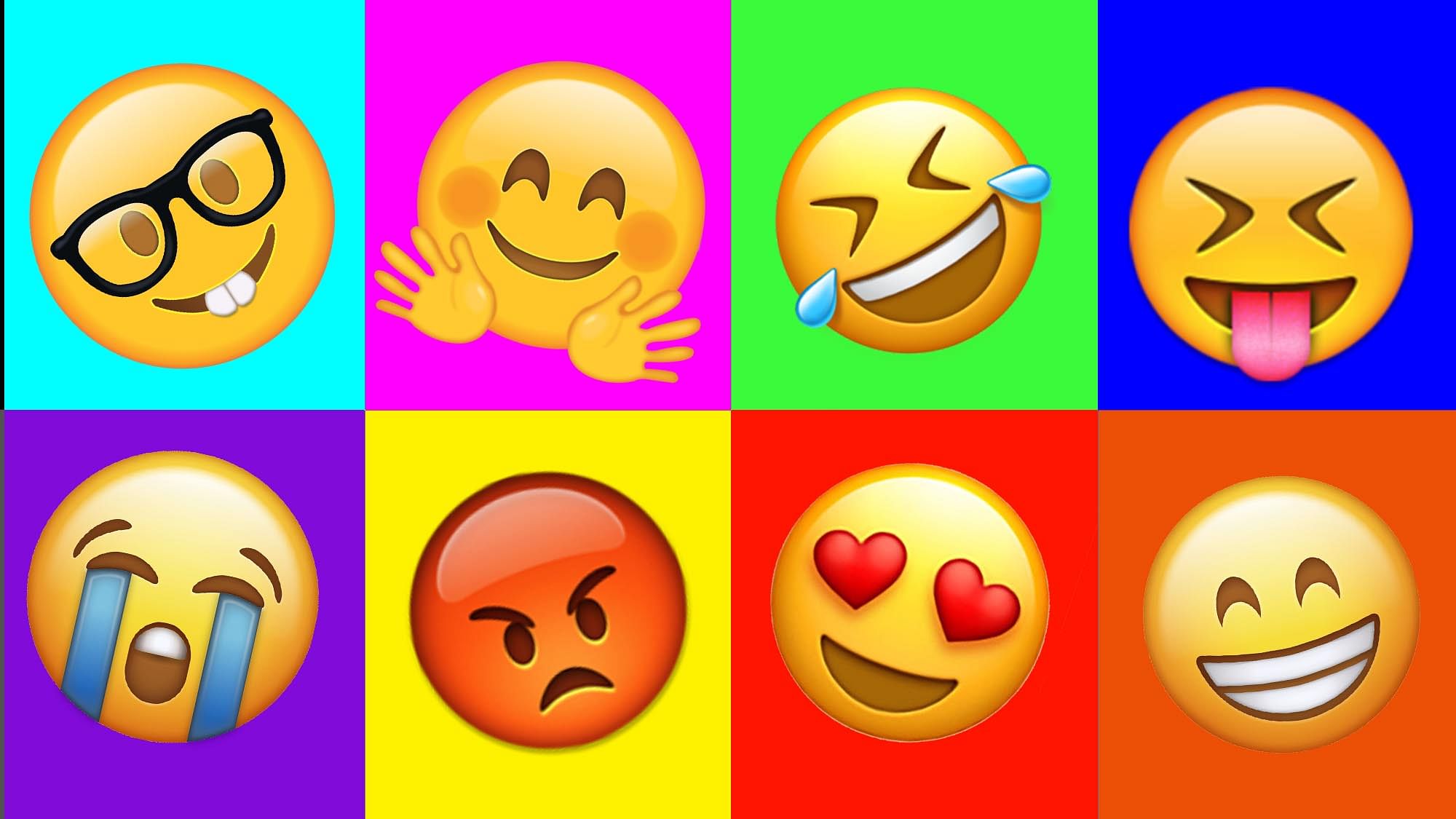
Colors can have a significant impact on our emotions and mood. The choice of color is based on the desired atmosphere and the emotional response that the color evokes.Color can be used to set the mood of the kitchen, depending on the desired atmosphere.
For example,
- warm colors like red, orange, and yellow can create a cozy and inviting atmosphere,
- while cooler colors like blue and green can create a calming and serene environment.
- Bright, vibrant colors can stimulate appetite, while muted or neutral colors can have a calming effect.
- Red: The color red is known to increase energy levels and stimulate the appetite. It can create a sense of excitement and passion in the kitchen.
- Yellow: The color yellow is associated with happiness, optimism, and warmth. It can create a welcoming and cheerful atmosphere in the kitchen.
- Green: The color green is known to promote relaxation and calmness. It can create a soothing and peaceful atmosphere in the kitchen.
- Blue: The color blue is associated with serenity, tranquility, and relaxation. It can create a calm and relaxing atmosphere in the kitchen.
- Orange: The color orange is known to stimulate the appetite and create a sense of warmth and comfort. It can create a cozy and inviting atmosphere in the kitchen.
- White: The color white is associated with purity, cleanliness, and simplicity. It can create a clean and minimalistic atmosphere in the kitchen.
Perception of Space:
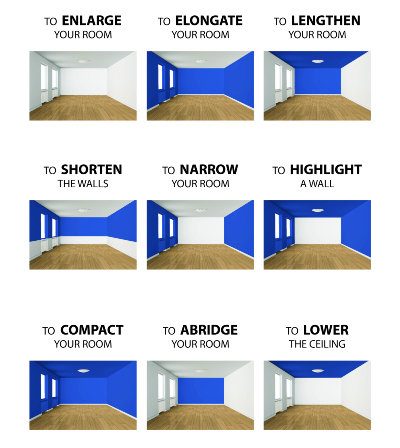
The color of a kitchen can also impact our perception of the space. The choice of color is based on the desired atmosphere and the desired effect on the perception of space in the kitchen.
- Light colors: Lighter colors, such as white or pastels, can create the illusion of a larger space as they reflect light and make the kitchen feel brighter and more spacious.
- Dark colors: Darker colors, such as black or dark gray, can make a space feel smaller and cozier. In a large kitchen, dark colors can help bring the space down to a more human scale.
- Color contrast: Using contrasting colors, such as a lighter color for cabinets and a darker color for countertops, can help to create the illusion of depth and dimension.
- Monochromatic color schemes: Using a monochromatic color scheme, such as shades of gray, can create a sense of continuity and flow, making the space feel more cohesive and open.
- Bold colors: Using bold, vibrant colors, such as red or blue, can create a focal point in the kitchen and draw the eye, creating the illusion of more space.
Style and Personality:
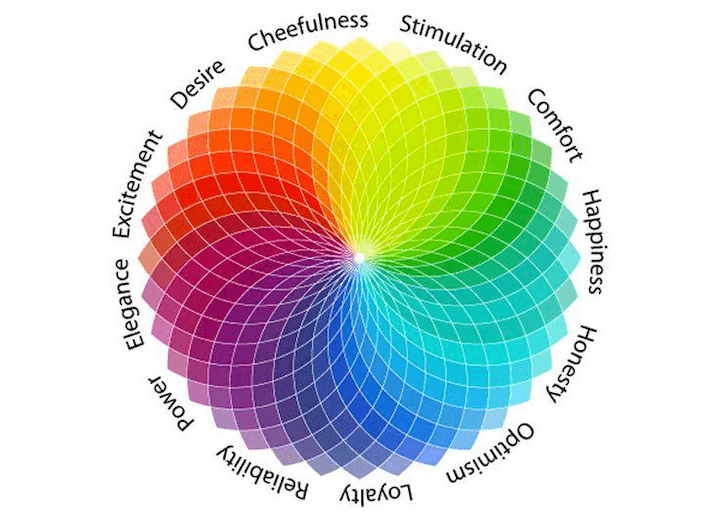
Color can also reflect the style and personality of the kitchen and its occupants. The color choices in a modular kitchen can reflect the personal style of the homeowner, making it a unique and personalized space.
For example, a kitchen with bold and colorful cabinets may reflect the homeowner’s vibrant and eclectic taste.
- Bold and vibrant colors: Using bold and vibrant colors, such as bright red or orange, can create a lively and energetic atmosphere in the kitchen, giving it a bold and modern look.
- Neutral colors: Using neutral colors, such as beige or gray, can create a more classic and timeless look for the kitchen, providing a clean and sophisticated feel.
- Monochromatic colors: Using a monochromatic color scheme, such as all white or all black, can create a modern and minimalistic look for the kitchen.
- Contrasting colors: Using contrasting colors, such as black and white, can create a classic and elegant look for the kitchen, providing a sense of balance and harmony.
- Pastel colors: Using pastel colors, such as soft pink or mint green, can create a charming and romantic look for the kitchen, giving it a cozy and inviting feel.
In summary, colour can play an important role in creating a kitchen environment that is comfortable, inviting, and reflective of the style and personality of the occupants.
On a softer note, if your want to have a happy mood in the home, ensure that the kitchen colours are in accordance to the mood you want. The average time spent on the kitchen by house wife is 14 to 21 hours a week.
If you or your vendor understands the science of colours in kitchen, it will go a long way in increasing your happy hours.


Interesting insights on how kitchen colors affect mood and appetite—also, check out Telkom University Jakarta for helpful college tips!